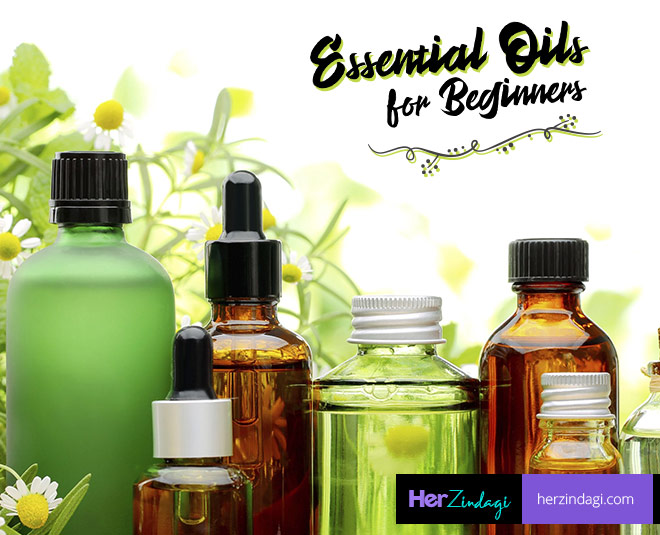
Pooja Nagdev, Aromatherapist and Cosmetologist, Founder at Inatur says there are certain do's that one must follow while choosing the right essential oil. Everyone is aware of the numerous benefits of essential oils but while choosing these oils one has to be very careful of right oil source and quality before we put in in our day to day routine. Have you felt alleviated at a whiff of peppermint oil? Or have felt relief when suffering from stomach ache thanks to a few drops of some peppermint oil in water? It’s essential to understand and know how to select pure essential oils. Essential oils are highly volatile plant derivatives in a form of oils or resins which have single or multi-cell pockets.

Essentials oils are light sensitive and therefore should be stored in tightly capped amber or coloured bottles away from extremes of heat or cold. Anything being sold in a clear bottle is most likely not an essential oil. Clear glass, at the very least, indicates distribution by people unfamiliar with essential oils.
Essential oils should be labelled with the botanical name of the extracted plant and information should be available about the method used to produce them.
Essential oils are expensive due to production variables. So if you come across an essential oil that is inexpensive one must challenge it as it might not be pure. For instance, it takes up to 2,000 pounds of rose petals to produce one pound of rose essential oil through distillation. Lavender flowers can produce essential oils at a ratio of 50 to 1:25 pounds of citrus rind make one pound of expressed citrus oils. Due to the variables of labour, rainfall, farming costs, extraction methods, and demand on the world market, rose oil can sell for Rs 2800 or more for 29 ml or orange for as little as Rs 208.
For example, Jasmine is ninety-two times the price of grapefruit on my current wholesale list, and sandalwood is four times the price of lime. If you see different essential oils selling for the same price, it is probable that these oils are diluted with vegetable oil to create this pricing structure. Beware of fragrances usually sold in clear glass. These are not essential oils but are chemical compositions made in a laboratory to produce a smell which is a copy of nature. No reputable essential oil supplier sells essential oils all at the same price. Buy Pure Source India Aroma Diffuser Oil (Lavender, Lemongrass, Rose, Jasmine, Sandalwood and Mogra), 15ml Each, Multicolour - Set of 6 for Rs 399, here.

There is no such essentials oil as watermelon, bubble gum or Pina colada.
Perfumes may contain essential oil components- the finer perfumes invariably do- but they also contain petroleum products and alcohol to increase their diffusability. For effective therapeutic use, it is crucial that only pure essential oils are used- that is, natural plant essences which have been extracted any steam distillation, solvent extraction, expression, maceration or enfleurage. It is quite pointless buying any other product, no matter how charming its aroma maybe, because reconstituted products or chemical copies of natural essences simply do not work for medicinal purposes.
Unscrupulous suppliers, as well as selling those oils mentioned above, will dilute a pure essential oil in a carrier base and pass that off as pure natural essence. These fakes are easier to spot than any other because the base oil is oily, while essential oils, for the most part, are not. For this reason, the term ‘essential oil’ is something of a misnomer.
Don't Miss: Treat Your Skin To These Natural Carrier Oils For A Youthful Skin
Pure essential oils, when dropped on blotting paper, will impregnate it, then evaporate and disperse, leaving no oily patch. Other vegetable oils, on the other hand, will leave an oily mark. There are some exceptions to this rule: Vetiver, patchouli etc. that are basically resin oils, for example, are more viscous and more difficult to identify when diluted in a base oil. Buy The Beauty Co. Lemongrass Pure Natural Essential Oil For Strengthening Scalp, Reduce Hair Loss, And Helps in Insomnia, 15ml for Rs 179, here.
Also, some oils have their own colour. For instance, pure orange oil sometimes carries an orange colour. Bergamot oil and Tea tree oil are slightly green in colour. Buy Rey Naturals Tea Tree Essential Oil for Aromatherapy - Tea Tree Essential Oil for Healthy Skin, Face, and Hair - 100% Organic Remedy for Dandruff, Acne, Stress, and More for Rs 199, here.
The oils should be kept in brown and dark-coloured bottles away from light, heat and damp. Keep the tops tightly closed when not in use. The therapeutic life of essential oils is about two years, although some would argue that they last longer than this. Certainly their antibiotic and other properties can still be utilized in non-body methods such as air-fresheners, kitchen surface wipes, perfumes or celebratory and gift purposes when their aroma is a crucial aspect of their use. Unfortunately, essential oils are not yet dated when sold, so it is impossible to tell how old they are when you buy them. That’s another reason for going to a reputable supplier.
We hope this guide was useful for you and that it will make things more easier for you!
Also watch this video
Herzindagi video
Our aim is to provide accurate, safe and expert verified information through our articles and social media handles. The remedies, advice and tips mentioned here are for general information only. Please consult your expert before trying any kind of health, beauty, life hacks or astrology related tips. For any feedback or complaint, contact us at compliant_gro@jagrannewmedia.com.